David R Witt
age ~45
from Allen, TX
- Also known as:
-
- David Ryan Witt
- Dave Witt
- Phone and address:
- 1828 Canyon Ct, Allen, TX 75013
David Witt Phones & Addresses
- 1828 Canyon Ct, Allen, TX 75013
- Garland, TX
- Plano, TX
- Nacogdoches, TX
- Colton, TX
Specialities
Property Management
Isbn (Books And Publications)





Isis Y Osiris / Isis & Osiris: Hasta El Fin Del Mundo / To the Ends of the Earth
view sourceAuthor
David Witt
ISBN #
0822579715
Medicine Doctors

David H. Witt
view sourceSpecialties:
Hematology/Oncology
Work:
Yale Medical GroupSmilow Cancer Center Of Trumbull
5520 Park Ave FL 1, Trumbull, CT 06611
(203)5028400 (phone), (203)5028409 (fax)
5520 Park Ave FL 1, Trumbull, CT 06611
(203)5028400 (phone), (203)5028409 (fax)
Education:
Medical School
New York University School of Medicine
Graduated: 1978
New York University School of Medicine
Graduated: 1978
Procedures:
Bone Marrow Biopsy
Chemotherapy
Electrocardiogram (EKG or ECG)
Vaccine Administration
Chemotherapy
Electrocardiogram (EKG or ECG)
Vaccine Administration
Conditions:
Anemia
Hemolytic Anemia
Iron Deficiency Anemia
Leukemia
Multiple Myeloma
Hemolytic Anemia
Iron Deficiency Anemia
Leukemia
Multiple Myeloma
Languages:
English
Spanish
Spanish
Description:
Dr. Witt graduated from the New York University School of Medicine in 1978. He works in Trumbull, CT and specializes in Hematology/Oncology. Dr. Witt is affiliated with Bridgeport Hospital, St Vincents Medical Center and Yale New Haven Hospital.

David J. Witt
view sourceSpecialties:
Podiatric Medicine
Work:
Hauser Witt & Associates Inc
4888 Whiteford Rd, Toledo, OH 43623
(419)8855563 (phone), (419)8855439 (fax)
4888 Whiteford Rd, Toledo, OH 43623
(419)8855563 (phone), (419)8855439 (fax)
Procedures:
Arthrocentesis
Hallux Valgus Repair
Hallux Valgus Repair
Conditions:
Hallux Valgus
Plantar Fascitis
Tinea Pedis
Plantar Fascitis
Tinea Pedis
Languages:
English
Description:
Dr. Witt works in Toledo, OH and specializes in Podiatric Medicine. Dr. Witt is affiliated with Mercy Childrens Hospital, Mercy St Anne Hospital, Promedica Flower Hospital and St Lukes Hospital.

David J. Witt
view sourceSpecialties:
Infectious Disease
Work:
Kaiser Permanente Medical Group
97 San Marin Dr, Novato, CA 94945
(415)8997400 (phone), (415)8997506 (fax)
97 San Marin Dr, Novato, CA 94945
(415)8997400 (phone), (415)8997506 (fax)
Education:
Medical School
University of Michigan Medical School
Graduated: 1979
University of Michigan Medical School
Graduated: 1979
Conditions:
HIV Infection
Languages:
English
Spanish
Tagalog
Spanish
Tagalog
Description:
Dr. Witt graduated from the University of Michigan Medical School in 1979. He works in Novato, CA and specializes in Infectious Disease. Dr. Witt is affiliated with Kaiser Permanente Santa Clara Medical Center.

David R. Witt
view sourceSpecialties:
Family Medicine
Education:
Medical School
University of Texas Medical School at Houston
Graduated: 1997
University of Texas Medical School at Houston
Graduated: 1997
Procedures:
Arthrocentesis
Cardiac Stress Test
Continuous EKG
Destruction of Benign/Premalignant Skin Lesions
Electrocardiogram (EKG or ECG)
Psychological and Neuropsychological Tests
Pulmonary Function Tests
Skin Tags Removal
Vaccine Administration
Cardiac Stress Test
Continuous EKG
Destruction of Benign/Premalignant Skin Lesions
Electrocardiogram (EKG or ECG)
Psychological and Neuropsychological Tests
Pulmonary Function Tests
Skin Tags Removal
Vaccine Administration
Conditions:
Acne
Acute Upper Respiratory Tract Infections
Allergic Rhinitis
Anxiety Phobic Disorders
Attention Deficit Disorder (ADD)
Acute Upper Respiratory Tract Infections
Allergic Rhinitis
Anxiety Phobic Disorders
Attention Deficit Disorder (ADD)
Description:
Dr. Witt graduated from the University of Texas Medical School at Houston in 1997. He works in Longview, TX and specializes in Family Medicine. Dr. Witt is affiliated with Longview Regional Medical Center.

David Robert Witt
view sourceSpecialties:
Pediatrics
Medical Genetics
Clinical Genetics
M.D.
Medical Genetics
Clinical Genetics
M.D.
Education:
Tufts University (1979)
Name / Title
Company / Classification
Phones & Addresses
Owner
Land Pro Creations, LP
Landscape Contractors. Irrigation Consultants. Landscape Lighting. Exterior Structures - Gazebos. Arbors. Pergolas. Swimming Pool Contractors. Dealers. Design. Patio Builder. Patio & Deck Builders. Outdoor Kitchens. Landscape Designers. Landscape Contractors - Commercial
Landscape Contractors. Irrigation Consultants. Landscape Lighting. Exterior Structures - Gazebos. Arbors. Pergolas. Swimming Pool Contractors. Dealers. Design. Patio Builder. Patio & Deck Builders. Outdoor Kitchens. Landscape Designers. Landscape Contractors - Commercial
PO Box 797217, Dallas, TX 75379
(972)3806777
(972)3806777
President, Secretary
Bresources Inc
Nonclassifiable Establishments
Nonclassifiable Establishments
GAINES & WITT, LLC
DAVID E. WITT, INC
OVERLAND FARMS, LLC
President, Owner
LAND PRO CREATIONS, L.P
Lawn/Garden Services · Landscape Services · Landscaper · Landscaping Svcs
Lawn/Garden Services · Landscape Services · Landscaper · Landscaping Svcs
3422 Gilbert Rd, Grand Prairie, TX 75050
PO Box 797217, Dallas, TX 75379
17806 Davenport Rd, Dallas, TX 75252
(972)3806777, (972)3806775
PO Box 797217, Dallas, TX 75379
17806 Davenport Rd, Dallas, TX 75252
(972)3806777, (972)3806775
Secretary
RIVA MODELING SYSTEMS INC
Chairman, CFO, Director
RIVA MODELING SYSTEMS INC
Us Patents
-
Push Bench Method For Manufacturing Small Diameter Tubing
view source -
US Patent:7290424, Nov 6, 2007
-
Filed:Jan 19, 2005
-
Appl. No.:11/038807
-
Inventors:Paul Fullerton - Plano TX, US
Nathan A. Roden - Lindale TX, US
David R. Witt - Longview TX, US -
Assignee:Lone Star Steel Company, L.P. - Dallas TX
-
International Classification:B21C 1/26
-
US Classification:72284
-
Abstract:The present invention involves cost effective, efficient systems and methods for sizing pipe. In an embodiment of the present invention, a pipe sizing system includes a die having an opening operable to size the pipe, a hydraulic cylinder having at least one rod attached thereto, the hydraulic cylinder and the at least one rod cooperating with each other to push the pipe through the die, and a receiver to guide the pipe as the pipe exits from the die.
-
Push Bench And Method Of Manufacturing Small Diameter Tubing
view source -
US Patent:7621164, Nov 24, 2009
-
Filed:Oct 12, 2007
-
Appl. No.:11/871653
-
Inventors:Paul Fullerton - Plano TX, US
Nathan A. Roden - Lindale TX, US
David R. Witt - Longview TX, US -
Assignee:United States Steel Corporation - Pittsburgh PA
-
International Classification:B21C 1/26
B21C 1/34 -
US Classification:72284, 72287, 72290
-
Abstract:The present invention involves cost effective, efficient systems and methods for sizing pipe. In an embodiment of the present invention, a pipe sizing system includes a die having an opening operable to size the pipe, a hydraulic cylinder having at least one rod attached thereto, the hydraulic cylinder and the at least one rod cooperating with each other to push the pipe through the die, and a receiver to guide the pipe as the pipe exits from the die.
-
Push Bench And Method Of Manufacturing Small Diameter Tubing
view source -
US Patent:8387434, Mar 5, 2013
-
Filed:Nov 20, 2009
-
Appl. No.:12/623168
-
Inventors:Paul Fullerton - Plano TX, US
Nathan A. Roden - Lindale TX, US
David R. Witt - Longview TX, US -
Assignee:United States Steel Corporation - Pittsburgh PA
-
International Classification:B21C 1/26
-
US Classification:72284, 72287, 72290
-
Abstract:The present invention involves cost effective, efficient systems and methods for sizing pipe. In an embodiment of the present invention, a pipe sizing system includes a die having an opening operable to size the pipe, a hydraulic cylinder having at least one rod attached thereto, the hydraulic cylinder and the at least one rod cooperating with each other to push the pipe through the die, and a receiver to guide the pipe as the pipe exits from the die.
-
Aircraft Missile Launcher Sway Brace Apparatus
view source -
US Patent:48298760, May 16, 1989
-
Filed:Feb 17, 1988
-
Appl. No.:7/157365
-
Inventors:David A. Witt - Rowlett TX
-
Assignee:Varo, Inc. - Garland TX
-
International Classification:F41F 700
-
US Classification:89 153
-
Abstract:A saddle sway brace (90) having a channeled planar plate (94) engageable on a missile launcher platform surface (56). Angled planar plates (100, 102) provide load support for aircraft outrigger equipment. A webbed reenforcing network (110, 112) is engageable with notches (122, 124) in the missile launcher for load support and stability.
-
Aircraft Missile Launcher Mounting Apparatus
view source -
US Patent:47366699, Apr 12, 1988
-
Filed:Feb 20, 1987
-
Appl. No.:7/017777
-
Inventors:Kenneth R. Long - Plano TX
Gary D. Poole - Garland TX
David A. Witt - Rowlett TX
Ronald L. Dale - Royse City TX -
Assignee:Varo, Inc. - Garland TX
-
International Classification:F41F 700
-
US Classification:89 1819
-
Abstract:A missile launcher is disclosed having an elongate planar platform (28) formed integral with the body of the launcher (26). Plural bomb rack fasteners (34, 36) and pylon mounting lugs (38, 40) are fixed to the platform surface (28) to accommodate different aircraft types. Plural sway braces (46) are removably fixed to the side edges of the platform surface (28). Each sway brace (46) can be fixed to desired positions along the side edges of the platform surface (28) to also accommodate different aircraft type mounting apparatus.
Vehicle Records
-
David Witt
view source -
Address:341 Kingsbridge Dr, Garland, TX 75040
-
Phone:(469)6282660
-
VIN:1C4RJFAG7CC284507
-
Make:JEEP
-
Model:GRAND CHEROKEE
-
Year:2012
Lawyers & Attorneys

David Witt - Lawyer
view sourceISLN:
907877613
Admitted:
1980
University:
University of British Columbia, 1975
Law School:
University of British Columbia, LL.B., 1978
Plaxo

David Witt
view sourceHouston, TX

David Witt
view sourceClaims Assistant at Kraus Carpet Mills

David Witt
view sourceWitt Appraisal Services

David Witt
view sourceAltadena, CA.

David Witt
view sourceMansfield, Tx
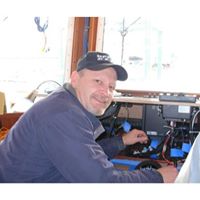
David De Witt
view source
David Vaughn Witt
view source
David Witt Jr.
view source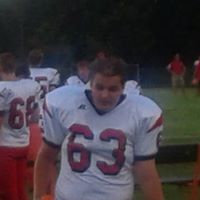
David Witt Jr.
view source
David Wayne Witt
view source
William David Witt
view source
David K Witt
view source
David L. Witt
view sourceYoutube
Classmates

David Witt
view sourceSchools:
Lincoln Elementary School South Bend IN 1957-1963

David Witt
view sourceSchools:
Roanoke County Educational Center Salem VA 1971-1975

David Witt
view sourceSchools:
Ovid Junior High School Ovid MI 1969-1973
Community:
Marilyn Lemarble, Archie Hutchison

David Witt
view sourceSchools:
Dr. Phillips Elementary School Orlando FL 1999-2003
Community:
Cami Combs, Jacqueline Kalter

David Witt
view sourceSchools:
Fieldale-Collinsville High School Collinsville VA 1981-1985
Community:
Jerry Shelton, Debi Mills

David Witt
view sourceSchools:
Brookwood Elementary School Genoa City WI 1975-1979
Community:
Lucy Couch, Lester Cunningham, Liane Meyer

David Witt
view sourceSchools:
Abbotsford High School Abbotsford WI 1966-1970
News

Swiatek sweeps Sakkari aside in final to win second Indian Wells title
view source- turning around a career that had begun to head in the wrong direction after her surge into the top five two years ago. Just last week she started with a new coach, David Witt, who formerly coached Venus Williams and Jessica Pegula to great success, following years of working with Tom Hill, a close friend.
- Date: Mar 17, 2024
- Category: Sports
- Source: Google

Maria Sakkari outlasts Coco Gauff on a strange and wild night in the desert
view source- She has a new coach this tournament, too, David Witt, who worked for years with Venus Williams and then took Jessica Pegula from outside the top 100 to No 3 in the world. He hasnt done all that much yet, she said. Its early days. But she said he makes her laugh. A lot.
- Date: Mar 16, 2024
- Category: Sports
- Source: Google

Hope fades for Volvo Ocean Race yachtsman John Fisher, presumed lost at sea
view source- Fisher had sailed with Scallywag skipper David Witt for years on the Ragamuffin and Scallywag super maxis and had lived in Southampton; more recently, he was based in Adelaide, Australia. The teams website describes him as having plenty of big boat experience and said he is a veteran of the Sydne
- Date: Mar 27, 2018
- Category: Sports
- Source: Google

Tragic news from Volvo Ocean Race
view source- 2017-18 Edition: Entered Teams Skippers Team AkzoNobel (NED), Simeon Tienpont (NED) Dongfeng Race Team (CHN), Charles Caudrelier (FRA) MAPFRE (ESP), Xabi Fernndez (ESP) Vestas 11th Hour Racing (DEN/USA), Charlie Enright (USA) Team Sun Hung Kai/Scallywag (HKG), David Witt (AUS) Turn th
- Date: Mar 27, 2018
- Category: Sports
- Source: Google

After best Wimbledon since '09, Venus Williams vows return
view source- ''I just think it was a missed opportunity here,'' said Venus' coach, David Witt. ''She could've easily been in the finals, and then in the finals, all it takes is one good match of unbelievable tennis and you just don't know what happens.''
- Date: Jul 08, 2016
- Category: Sports
- Source: Google

Venus, Serena Williams 1 win apiece from Wimbledon final
view source- "It's nice to see, because she puts in the work," said David Witt, Williams' coach. "She hasn't been back, but not because of her play. Any given tournament, she's capable of beating anybody in the tournament. It's just a matter of winning six, seven matches in a row and keeping your level of play a
- Date: Jul 07, 2016
- Category: Sports
- Source: Google

Serena, Venus comfortable with divergent roles
view source- Her coach, David Witt, says Venus remains resolute enough to believe she can still win the title here and even play for several more years. Patrick Mouratoglou, Serena's coach, says "there's never been any retirement" talk among the sisters in his presence.
- Date: May 29, 2016
- Category: Sports
- Source: Google

A Phase of Venus
view source- Venus has been working with her coach, David Witt, since a little over forever, as she might saythey started hitting together back in 2002.In her approach and dedication to her profession, Venus seems to have changed little over the years. Shes still as stoic in defeat and delighted in v
- Date: Mar 30, 2015
- Category: Sports
- Source: Google
Myspace
Flickr
Googleplus

David Witt
Work:
Universal Orlando - Food Cart Attendant (10-7)
Five Guys - Cook (10-7)
Toojay's Gourmet Deli - Busser/Dishwasher (10-1)
Twisted Burger - Line Cook (1-3)
Five Guys - Cook (10-7)
Toojay's Gourmet Deli - Busser/Dishwasher (10-1)
Twisted Burger - Line Cook (1-3)
Education:
Dr. Phillips High School - General Education
Relationship:
Single
About:
I'm David Witt... 'nuff said
Bragging Rights:
I'm the shit... or so I think so

David Witt
Education:
Michigan State University - Computer Science, Wayne State University - MBA

David Witt
Education:
Willi graf gymnasium
Relationship:
Single
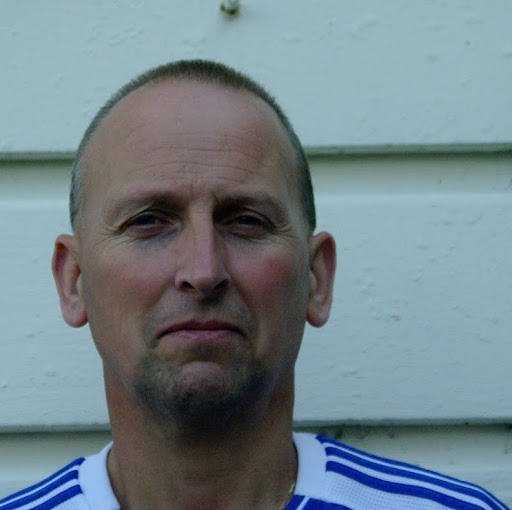
David Witt
Work:
CAREER
Tagline:
I am David Witt from Honiton

David Witt
Work:
Creative Photo & Digital Imaging - Owner
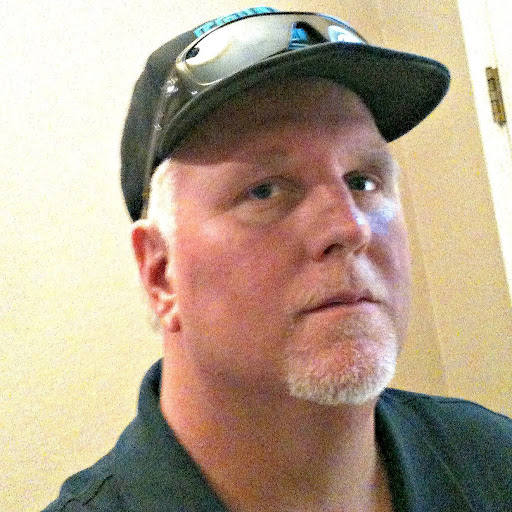
David Witt
Work:
DC Tile & Stone - Owner
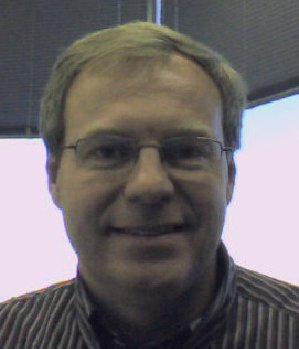
David Witt
Work:
Technical Standards and Safety Authority

David Witt
Get Report for David R Witt from Allen, TX, age ~45

















